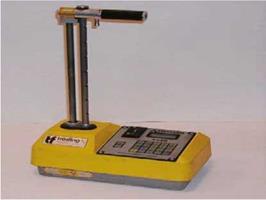Non-destructive Methods
A number of methods exist for estimating the soil water content of road materials in a non-destructive way assuming that the instruments are placed in the road during
the construction phase. They are all indirect methods as they involve measurements of some property of the material affected by the water content or they measure a property of some object placed in the material. Some of the more common indirect methods used in the highway environment are briefly described here.
3.2.2.1 Neutron Scattering Method
In the neutron scattering method a tube acts as a radioactive source and a detector. The radioactive source is placed at the end of a rod inserted into a pre-made hole to a depth of, typically, 150 and 300 mm. High energy neutrons are emitted from the source and the neutrons collide with nuclei of atoms in the surrounding soil, thus reducing the energy level of the neutrons. They are slowed substantially by collision with nuclei of similar mass, usually hydrogen atoms, making this technique sensitive to water content. Therefore the proportion of neutrons returning to the tube’s detector is proportional to the water content of the soil the neutrons have travelled through (Hignet & Evett, 2002; Veenstra et al., 2005). As the neutron scattering method is based on radioactive decay, any other radioactive elements that are present, for example inside the pavement structure, may affect the results.
The neutron scattering method is frequently used along with gamma ray attenuation in nuclear moisture-density devices where both water content and density measurements are provided (see Fig. 3.1). The gamma ray attenuation method uses a beam of gamma rays emitted from a radioactive isotope of caesium that is sent through a soil sample of known volume and measured by a detector. The hydrogen atoms in the water scatter neutrons and the amount of scatter is proportional to the total unit weight of the material.
 |
 |
Neutron scattering is an accurate and precise method for soil water content measurements. However it cannot be left unattended due to its radioactive source and can therefore not be used in an automated monitoring programme.






Leave a reply